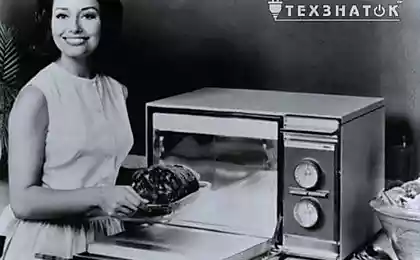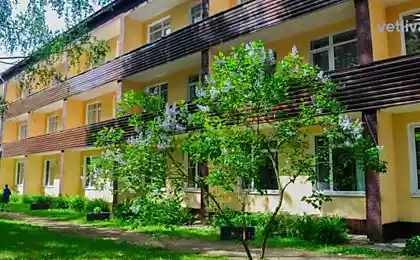514
Near Evpatoria explored antique new estate

A new private housing estate at the end of IV – first third of the III century BC, is studied on the settlement of "the Seagull."
In the settlement "Chayka" (North-West Crimea, environs of Yalta) investigated a new estate of the late IV – early III century BC, the Excavation was led by researcher at the Department of archaeology of Moscow state University, candidate of historical Sciences Tatiana V. Egorova. The study is published in the June issue of the journal Stratum Plus.
The ancient settlement "Seagull" was founded in 60-ies of the IV century BC It was a small fortress, located in the Chora (agricultural territory) of the ancient Greek Chersonesos state. Apparently, the "Seagull" was the point at which products were brought from the nearby districts to send the sea in Hersonissos. At the turn of IV-III centuries BC the town dies in a fire. The researchers suggest that the destruction of the settlement can be related to the power struggle in the Chersonese.
At the beginning of III century BC on the site of a fortress built some private estate that exist before 70-60-ies of the third century, Before the excavations of recent years have been known three estates of this time who were in the Northern part of the settlement. One of them probably belonged to a man connected with the stone business, other estate specialized in wine making. The owner of the third estate was probably engaged in the manufacture of mud-bricks (unfired clay).
The new, fourth estate, were studied in 2009-2010 She was in the South-Eastern part of the settlement, had a rectangular form, were oriented in accordance with the directions. The area of the estate had reached about 470 m2. Its center was the courtyard, paved with stone chips and small rough stones. The courtyard was surrounded by rooms. Along the long walls of the manor (East and West) areas are placed in one row along the short – in two rows.
The manor was entered in the remains of the walls of the "fortress" of the previous period of the existence of the settlement. Continued to exist, the winery to which a new farmstead was built to the East.
The main entrance to the manor house in its South-Western part. He led not directly into the yard and skirted the Western end of the premises of the young series. Another entrance was in the South wall of the estate, and led directly into one of the rooms of the manor, paved with large stones. Probably, it kept cattle and separate entrance were simplified his pasture to pasture.
Most of the rooms had economic value. Here were found remains of furnaces, stone Tarpan (the trough in which crushed grapes), grain grinders, mortar, bone piercings, whorls (weights for weighting the spindle). The greatest part of the premises was residential. According to T. V. Egorova, the estate could be two-storey, then the dwelling was also located on the top floor.
During the excavations of the estate, archaeologists found many fragments of pottery, particularly amphorae. Latest happening from different parts of the Greek world: the Chersonesus, Sinope, Heraclea, Thasos, Amestria and other centres. Moreover, were found fragments of black-lacquer ceramics, red clay ware, moulded vessels. Interesting finds of bronze tweezers and bronze arrowhead.
Found in several fragments discovered graffiti (inscriptions scratched). The most interesting of them is an inscription on the rim canfora (vessel for drinking): "SAGGI [...], NUCLEO[...]". According to Deputy head of the numismatic Department of the Pushkin Museum. A. S. Pushkin, candidate of historical Sciences S. A. Kovalenko, the name of the person who left a dedicatory inscription can be restored as a "SANGARIS" = "SAGARIS". These names were found in inhabitants of some other cities of the Northern black sea: Olbia, Panticapaeum and Istria, however, in Chersonesos and its Chora, this name was not known to the researchers. SAGARIS is translated from Greek as "Scythian" or "Scythian axe".
Graffiti may indicate Scythian origin of the name and the author of the inscription: kanfar, which was the main vessel for drinking, could belong to the owner of the estate.
The death of two estates in the same way as other buildings of that time, probably associated with some kind of military conflict. In the estate there is no trace of the great fire. However, as already mentioned, it was found an arrowhead, which may indirectly indicate a conflict. In addition, near the time of the fire layer is fixed on the South wall of the manor.
Later life in the settlement revived. However, the third "Greek" period in the history of "the Seagull" (about the mid III century BC – middle of the II century BC) was a time of extinction of the settlement. At the end of II century BC "Chaika" is the later Scythians, they live here until the end of the first quarter of the first century ad
"The opening of the new estate is of great scientific importance. It changes not only our understanding of the layout and structure of the settlement at the end of IV – first half III century BC, but also on the number of families that inhabited this territory. We received information about where and how people lived, worked, probably, in seasonal production of wine, intended for sale, not for domestic consumption," says T. V. Egorova.
Source: Egorova T. V. "War and peace" on the shores of the Euxine. – No. 3. – Saint-Petersburg, Kishinev, Odessa, Bucharest. 2014. – P. 303-323.
Photos provided by T. V. Egorova.
Source: nkj.ru























